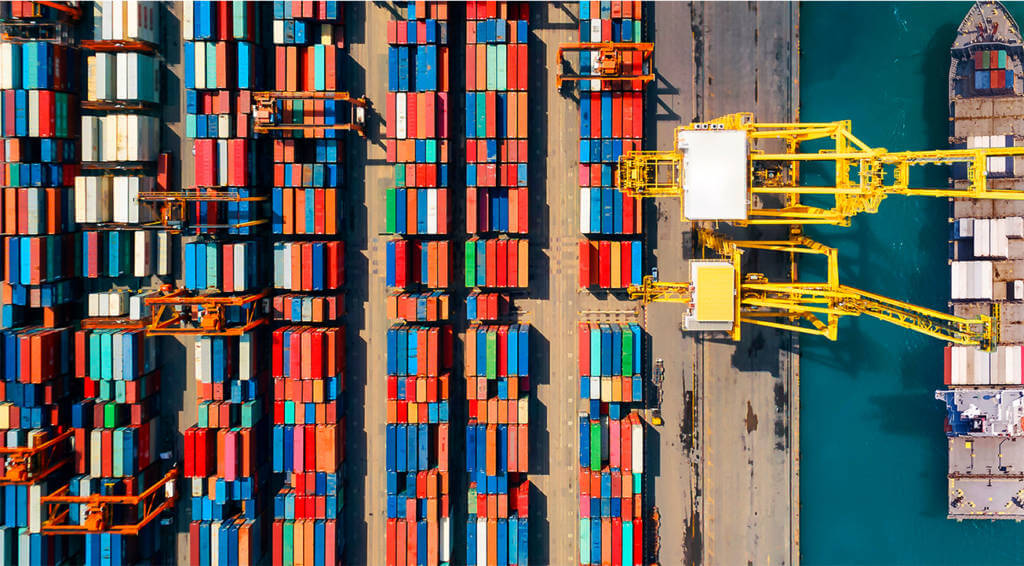How are trade finance revenues defying low trade volumes?
Despite today’s climate of rising trade tariffs and falling trade volumes, UniCredit’s Global Head of Global Transaction Banking, Luca Corsini, claims we have reason to remain optimistic for trade finance revenues in the coming months, pointing to the rising need for security in trade transactions, the rise of digital platforms to simplify and expand service provision, and continued infrastructure development stemming from Asia.
In June 2019, tariffs on USD 200 bn worth of Chinese goods rose from 10% to 25% – resulting in a notable drop in trade flows between the two countries. This downward trend is being felt across the globe. Recently, a Bloomberg article noted that global trade volumes are “falling at the fastest pace since the depths of the financial crisis”. Indeed, the trade monitor of Dutch Bureau for Economic Policy Analysis CPB revealed “a 1.9 percent drop in the three months through February compared with the previous three months” – this marks the sharpest drop since the period through May 2009. So, does this spell bad news for trade finance revenues?

Conventional wisdom argues that in a climate of rising trade tariffs and falling trade volumes, trade finance revenues will slump. However, despite increasingly frayed trade relations in the last few years, global trade finance revenues rose by 3 percent last year – suggesting that our widely accepted trade finance formula may not be as watertight as once thought.
One of the reasons for this may be down to the fact that security and trust become top priorities for corporates doing business in the face of rising tariffs and high-risk perception. And trade finance allows banks to build trust between buyers and suppliers. In this case, the causes of low trade flows are also drivers of trade finance for the trades that still take place.
This isn’t the first time we’ve seen this scenario play out. In the wake of the financial crisis of 2008-2009, for example, buyers began searching for trade finance support in the hope of protecting rates – meaning trade finance revenues held strong despite the difficult climate. What we can learn from this is that, even in the face of falling trade flows and rising tariffs, trade finance will likely remain in demand.

Boosting global trade
Digitising the otherwise paper-intensive business of trade finance may be an effective means to further stimulate trade. Last year in Europe, we.trade – an innovative trade finance portal – went into live production, allowing corporates to negotiate and close trade finance deals through a safe and secure, blockchain-enabled digital platform. Established by a consortium of banks including UniCredit, this innovation also allows corporates to bolster the deal with additional financial services, provided by their bank. The ease of use of platforms such as this should help trade finance reach further into supply chains and begin plugging parts of the notorious “trade finance gap” – still estimated to be around USD 1.5 bn.
On 31st October 2018, we.trade reached a milestone in its development when the management board signed a memorandum of understanding with eTradeConnect – Hong Kong’s newly launched digital trade finance platform. This agreement marked the beginning of an effort to fully integrate we.trade into other digital ecosystems beyond Europe, allowing corporates on both platforms to transact seamlessly.
As a platform specifically designed with SMEs in mind, this proof of concept perfectly positions we.trade to connect Asia’s strong and growing pool of small businesses with European corporates – thus streamlining trade finance deals across these regions.
Beyond digital trade finance solutions, a number of government-backed programmes are now underway that aim to foster global trade. Perhaps the most well-known of these is China’s Belt and Road Initiative (BRI) – ultimately seeking to connect Asia, Africa and Europe. Originally unveiled in 2013, this global development strategy has seen China invest into around 150 countries and corporates worldwide, spending an estimated USD 210 bn to date.
Major developments such as the BRI may represent a shifting “centre of gravity” – seeing economic influence move from Europe to Asia. As this unfolds, it will be down to banks to find new and more efficient ways to capitalise on this potential, while continuing to stimulate trade finance flows across these borders.
Arguably, the fastest and most effective way to do this is to devise and deploy corporate-facing tools such as we.trade and eTradeConnect, as well as proprietary trade finance platforms. These solutions are still in their early stages, but they are already on their way to creating a new kind of digital trade corridor that can promote a healthy and prosperous future for global trade.

































